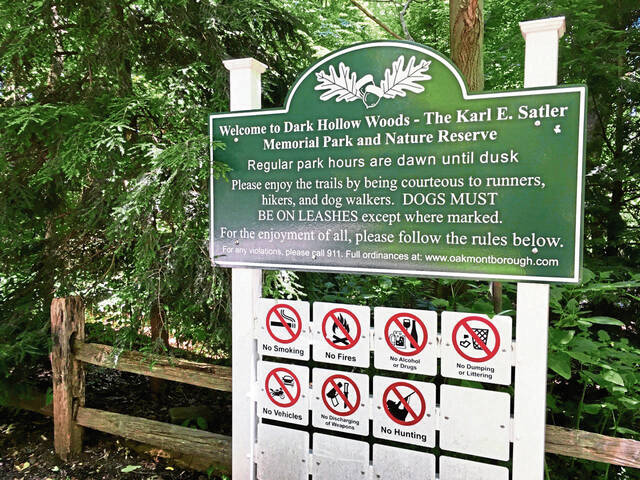Oakmont presents Dark Hollow Woods master plan, looking for volunteers
Last July, Oakmont Council set in motion a plan to restore Dark Hollow Woods, a 40-acre nature reserve that has fallen victim to erosion and invasive species.
A year later, Assistant Borough Manager Phyllis Anderson and other members of the master plan’s committee have introduced the Dark Hollow Woods Restoration and Maintenance master plan. The plan was unveiled at the Carnegie Oakmont Library on June 1.
“We have a committee of directors set up, but now we’re looking for volunteers for different committees,” Anderson said.
She said leaders are looking for photographers, people to inject the invasive knotweed found throughout the forest and archivists.
About 55 community members attended to learn about the history of the woods and why the plan was needed.
Anderson said the plan is set up to keep on for the next 50 years but shared that she is a little concerned about maintaining volunteers over the years.
“We have interest, but each phase is set to take some time,” she said. “So I’m a little worried that we won’t be able to maintain that interest if they’re waiting to do things.”
The extensive plan covers work over decades. But in the short term, here’s a look the first steps.
The project will include planting trees to deal with the fact that most of the trees are all the same age — meaning they will begin to fail, or die, at the same time.
With some of them being attacked by quickly spreading diseases, that time may come sooner than later.
Oak wilt disease is a common culprit found in the woods. It’s transmitted by tree cutters not cleaning off their saws and can spread from tree to tree. Since the tree roots are interconnected, if one tree is affected it can spread through the root system.
The new trees will be covered for three to five years until the saplings are strong enough to survive hungry deer.
Another villain lurking in the woods is knotweed, an invasive plant that grows aggressively.
“(An Oakmont Garden Club member) actually showed me a photo where they had cut the knotweed and injected it,” Anderson said. “It’s not returning as quickly as the other side of the road where (the knotweed) hasn’t been injected yet.”
After working with Environmental Planning and Design, a Pittsburgh-based landscape architecture and design firm, the borough engineer has mapped out a way to redirect stormwater that has played a hand in eroding the trails and woods.
Anderson said a housing subdivision behind the forest has directed water to the other side of a retaining wall and is causing erosion.
“Apparently the Fairways housing development has all of their gutters and downspouts pointed toward the woods,” Anderson said. “It’s eroding them even more quickly (than natural water flow would).”
The borough will be pursuing grants for the project to bolster money set aside for the plan. Work will continue through each grant application process, ideally without having to stop progress while waiting for more funds.
“The borough has invested time, money, materials and man hours to go up there and work,” she said.
Haley Daugherty is a TribLive reporter covering local politics, feature stories and Allegheny County news. A native of Pittsburgh, she lived in Alabama for six years. She joined the Trib in 2022 after graduating from Chatham University. She can be reached at hdaugherty@triblive.com.
Remove the ads from your TribLIVE reading experience but still support the journalists who create the content with TribLIVE Ad-Free.

